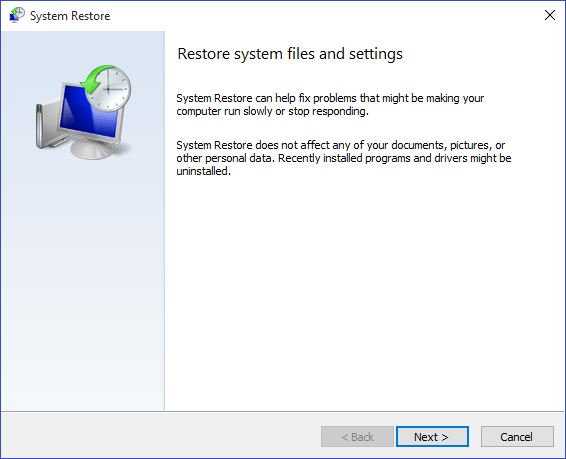How To Restore Windows 10 To An Earlier Restore Point
This tutorial was written by Tom's Hardware Community member viveknayyar007. You can find a list of all their tutorials here.
A restore point is a state of the computer that serves as a milestone to which you can revert the operating system settings in case they become corrupted or the OS fails to perform as expected. Here's how to restore Windows 10 to an earlier one of these restore points.
Windows 10 automatically creates a restore point before you make any changes to the system settings or install or uninstall a program. Windows 10 also allows you to manually create the restore points whenever you like.
It is unlikely that you would ever need to create a restore point as Windows 10 does that for you on its own.
You can restore Windows 10 a restore point either from within the operating system itself, or after booting the OS in the Safe Mode if Windows fails to boot properly.
Restore Windows 10 To A Restore Point From Within the Operating System
Turn your Windows 10 computer on and log on with an administrator account.
Get Tom's Hardware's best news and in-depth reviews, straight to your inbox.
On the desktop window, right-click the Start button.
Click Control Panel from the context menu.
When the Control Panel window opens, from the top-right corner, ensure that View by is set to Category.
Click the System and Security category from the Control Panel window itself.
From the right pane of the System and Security window, click File History.
From the bottom of the left pane of the File History window, click Recovery.
Click Open System Recovery from the right pane of the Recovery window.
On the initial page of the System Restore wizard, click Next.
On the next page, click to select your preferred restore point from the available list.
Click Next to continue.
On the Confirm your restore point page, click Finish.
On the warning box that appears click OK to confirm your action.
Wait until Windows 10 restores to the selected restore point and restarts automatically.
Start using the operating system normally.
The Tom's Hardware forum community is a powerful source of tech support and discussion on all the topics we cover from 3D printers, single-board computers, SSDs, and GPUs to high-end gaming rigs. Articles written by the Tom's Hardware Community are either written by the forum staff or one of our moderators.
-
dextermat Yep, this is the standard procedure. Now tell me every time an update fail, no restore points are available. This system is supposed to be there for that or I am mistaking? You cannot rely on system restore. Too bad M$.Reply -
procc By default restore is DISABLED, so first of all you have to turn it on... And only then you and your win10 will be able to create restore points....Reply -
bigpinkdragon286 Actually, because the release of Windows 10 has been fractionated into so many versions, these instructions will not work in all cases. Control Panel no longer exists as an option in the Power User Tasks Menu in newer releases of Windows 10, begging the question of how old the tutorial is. I would recommend that any Windows 10 tutorials be marked with the version they are intended for.Reply -
aquielisunari Reply20638803 said:A restore point is a state of the computer that serves as a milestone to which you can revert the operating system settings in case they become corrupted or the OS fails to perform as expected. Here's how to use them.
How To Restore Windows 10 To An Earlier Restore Point : Read more
Why are you sharing an outdated tutorial?









